Land defenders build tipi along TMX construction route in ‘Burnaby’
The structure was put up as a reminder that the 1,150-km pipeline is being built without consent on unceded Indigenous homelands

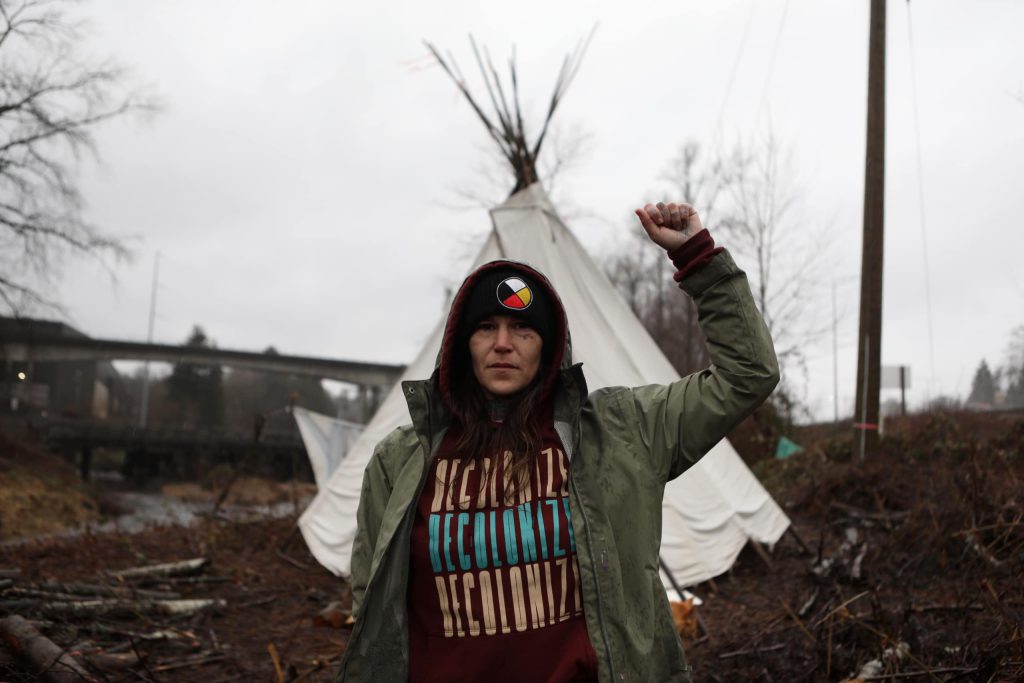
As the January rain falls around her, Khursten Bullock carefully approaches a tipi that was recently assembled alongside the Trans-Canada highway in “Burnaby.”
The structure, emblazoned with a “Stop TMX” sign, interrupts the 1,150-km path of the still-unfinished Trans Mountain expansion project (TMX) — part of an ongoing effort with the environmental group Protect the Planet to set up camps along the pipeline route.
After carefully navigating along the road’s edge, Bullock and her dog Caly hop the highway barrier, making their way down to the tipi which stands tall in a bushy area overlooking the Brunette River — home to the endangered Nooksack Dace fish.
A hanging sign above a short fence warns that they’re entering TMX property, and that any person who obstructs access to the construction site is a breach of an injunction order.
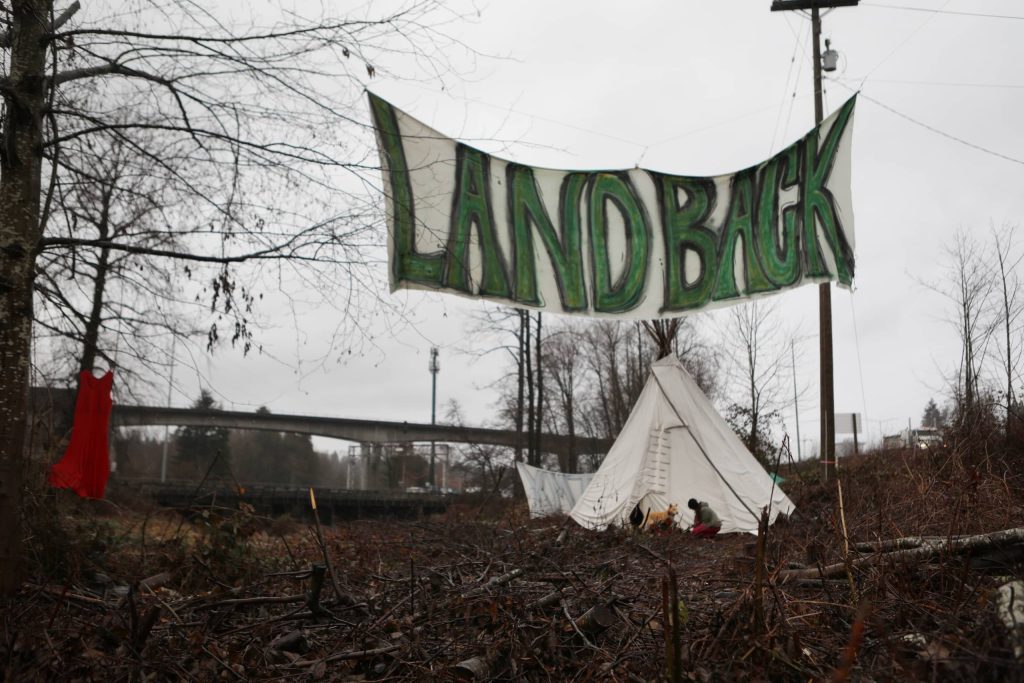
After Bullock puts Caly in a warm bed inside the tipi, she walks back out with a large “Land Back” sign, as well as a red dress to honour Missing and Murdered Indigenous Women and Two-Spirit People (MMIWG2S), to hang amongst the trees for passing vehicles to see.
The tipi, along with its supporting messages, is designed to remind TMX of its unwanted — and what many land defenders say is environmentally threatening — presence across the various unceded Indigenous homelands that it passes through along its route from “Alberta” to “B.C.”
Bullock, a Cree land defender from Treaty 7 in “Saskatchewan,” is one of the main land defenders taking care of the site. She’s been camping there on-and-off for more than a month now, splitting her time between supporting unhoused people living in “Vancouver’s” Downtown Eastside neighbourhood, and making weekly trips to the tipi.
“I thought it would be a really good symbol of Land Back against the pipeline who’s essentially ruining all of the lands across Western Canada,” said Bullock.

The TMX expansion – a project that ballooned from $4.5 billion in 2018 to more than $20 billion just four years later – has attracted negative controversy since the project was announced. Last summer, workers were seen installing the pipeline underneath the Kw’ikw’iya:la (Coquihalla) River in “Hope” within S’olh Temexw during an already-precarious salmon run.
Hundreds of kilometres away in Secwépemc territory, Indigenous land defenders and their allies are awaiting trial and potential jail time for opposing the project’s development there. Many have argued that TMX and “Canada” have no jurisdiction in the nation’s unceded homelands, and they fear the fate of water and salmon if the pipeline is ever up and running.
“The government really does not want this story out. It’s not a good news story,” said Tim Takaro of Protect the Planet, who’s also a physician-scientist at Simon Fraser University.
“There’s nothing good about building new fossil energy infrastructure in the middle of a climate emergency.”
Back in “Burnaby,” the tipi — with poles that span about eight metres — has been standing along the pipeline’s undeveloped route since it was first assembled on Dec. 4. The tipi is owned by Ramona Shirt of Cold Lake First Nations, who came up with the idea to assemble the structure with Bullock and their allies at Protect the Planet.

Two months before the tipi along the TMX route was developed, Shirt put one up outside of Coquitlam City Hall and slept inside of it with her two sons, after her family had no shelter to go to, as reported by CityNews Vancouver.
The article also highlights how in 1969, Shirt’s grandmother Lillian had similarly set up a tipi outside of Edmonton City Hall, after she experienced racism and discrimination by landlords who refused to rent out spaces to her.
IndigiNews reached out to Shirt for comment but did not hear back in time for publication.
In October 2022, Bullock and two other water protectors were arrested for camping near a TMX injunction zone of a work site near Stoney Creek, according to a Protect the Planet press release. The water protectors were monitoring the project there because they had concerns about its effects on the salmon which were running through the creek.
Rather than set up tents and camp out like they had done at Stoney Creek, the land defenders wanted to send a bigger message about Indigenous sovereignty and increase visibility to their resistance by setting up the tipi.
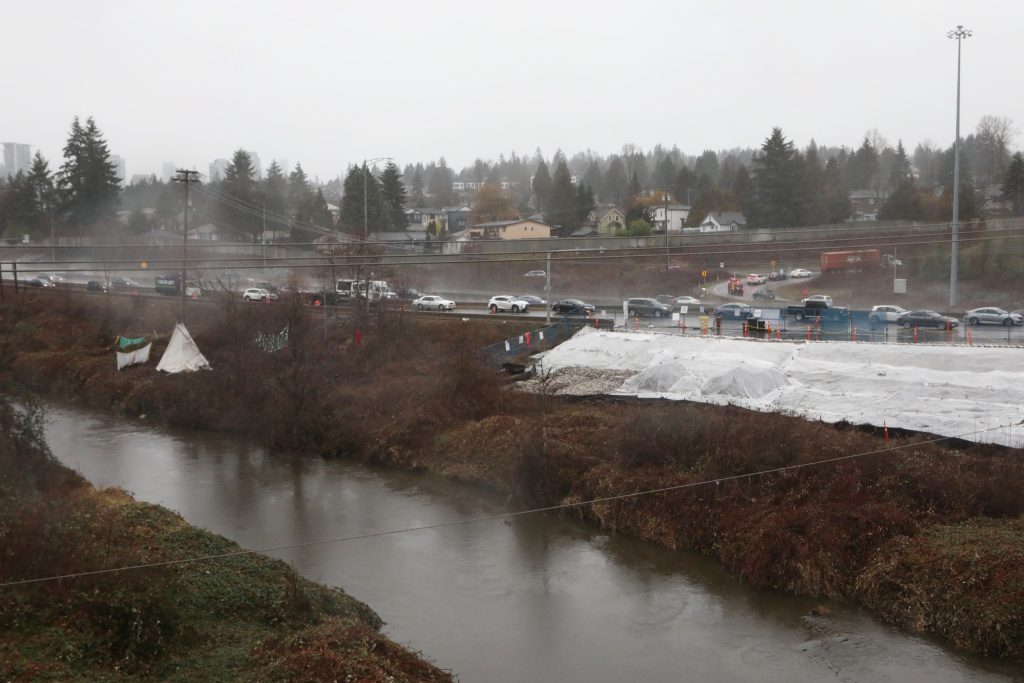
But despite its location below the SkyTrain and beside a never-ending stream of highway traffic, Takaro said that the initiative has garnered “deafening silence.” The response to the tipi has surprised organizers — in 2018, a Coast Salish watch house was also built along the TMX route in “Burnaby,” an initiative which garnered national attention.
“I thought people were going to care more. I really did. I thought as soon as we set it up, people were going to lose their minds,” said Bullock.
“Two months later, we’re still just sitting here, in the rain.”
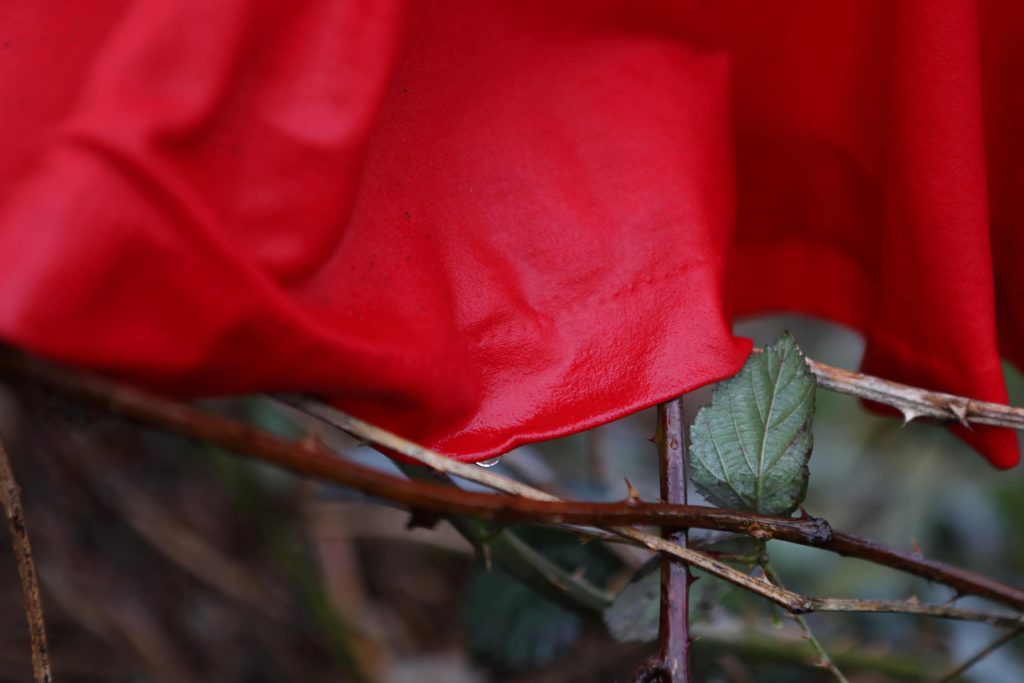
TMX personnel have also not addressed the land defenders regarding the tipi, according to Bullock. The only reaction that they received were from police, she said, who visited the tipi as it was being constructed.
The plan is to keep the tipi in place for a few more months, unless the land defenders are met with opposition from TMX. Bullock said that Shirt has expressed interest in moving the tipi to the Every Child Matters vigil site outside of the Vancouver Art Gallery at some point in the summer.
“The longer we stay, the more visibility we get. It’s not hurting any of us,” said Bullock.
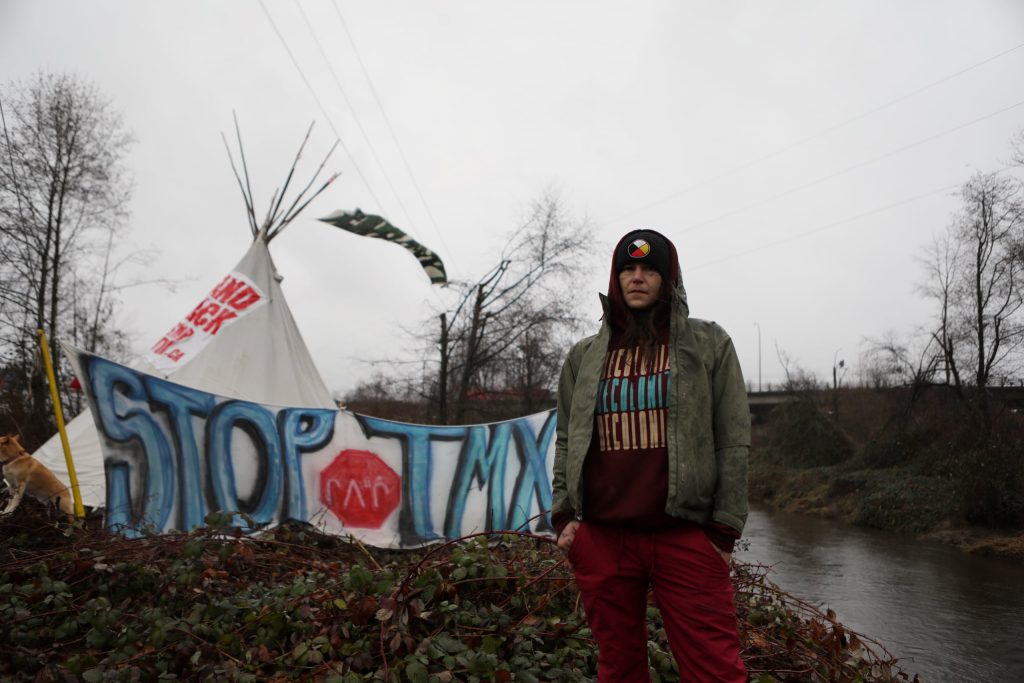
Both Bullock and Takaro said that they believe much of the public pays no mind to the environmental threat of TMX, as well as the resistance against the pipeline, because none of it has any effect on their lives.
“It’ll have to be too late before they care,” said Bullock.
Land defenders can only do so much in trying to preserve a healthier world for future generations, Takaro said, requesting the help of the public in their fight. He invited people to visit the site to get a better understanding of what’s happening on the frontlines.
“You can do everything you can to stop it,” he said.
“And then you could tell your grandchildren, ‘I did everything I could.’”
Reporting for this story was made possible in part through a grant from the Institute for Journalism and Natural Resources and the Gordon and Betty Moore Foundation.
Author
Latest Stories
-
‘Bring her home’: How Buffalo Woman was identified as Ashlee Shingoose
The Anishininew mother as been missing since 2022 — now, her family is one step closer to bringing her home as the Province of Manitoba vows to search for her
-
‘He was full of spirit, promise and love’: Police confirm Samuel Bird is presumed dead as search area narrows
Remains of the 14 year old, whose spirit name is Achakapis, are believed to be ‘no more than 150 km’ from ‘Edmonton,’ according to investigators












